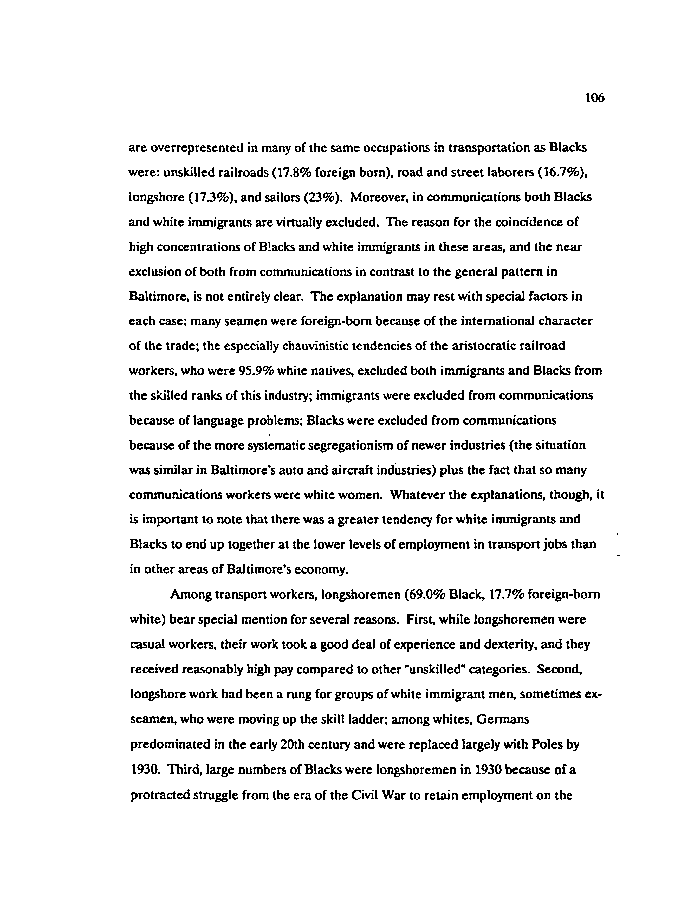|
106
are overrepresented in many of the same occupations in transportation as Blacks
were: unskilled railroads (17.8% foreign born), road and street laborers (16.7%),
longshore (173%), and sailors (23%). Moreover, in communications both Blacks
and white immigrants are virtually excluded. The reason for the coincidence of
high concentrations of Blacks and white immigrants in these areas, and the near
exclusion of both from communications in contrast to the general pattern in
Baltimore, is not entirely clear. The explanation may rest with special factors in
each case: many seamen were foreign-born because of the international character
of the trade; the especially chauvinistic tendencies of the aristocratic railroad
workers, who were 95.9% white natives, excluded both immigrants and Blacks from
the skilled ranks of this industry; immigrants were excluded from communications
because of language problems; Blacks were excluded from communications
because of the more systematic segregationism of newer industries (the situation
was similar in Baltimore's auto and aircraft industries) plus the fact that so many
communications workers were white women. Whatever the explanations, though, it
is important to note that there was a greater tendency for white immigrants and
Blacks to end up together at the lower levels of employment in transport jobs than
in other areas of Baltimore's economy.
Among transport workers, longshoremen (69.0% Black, 17.7% foreign-born
white) bear special mention for several reasons. First, while longshoremen were
casual workers, their work took a good deal of experience and dexterity, and they
received reasonably high pay compared to other "unskilled" categories. Second,
longshore work had been a rung for groups of white immigrant men, sometimes ex-
seamen, who were moving up the skill ladder; among whites, Germans
predominated in the early 20th century and were replaced largely with Poles by
1930. Third, large numbers of Blacks were longshoremen in 1930 because of a
protracted struggle from the era of the Civil War to retain employment on the
|

